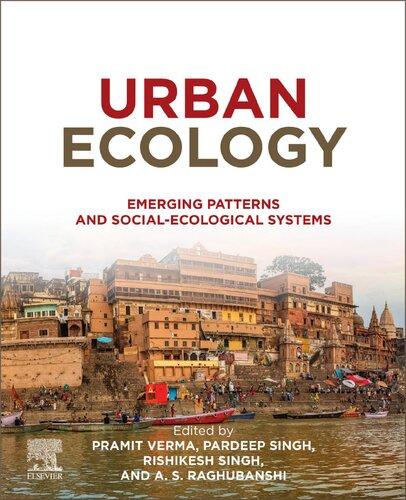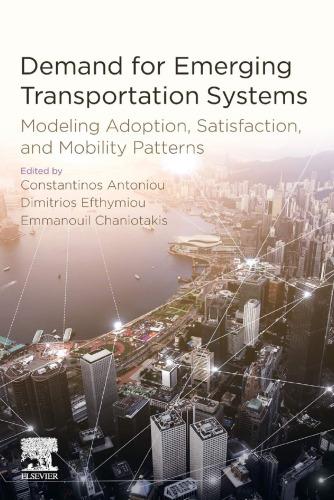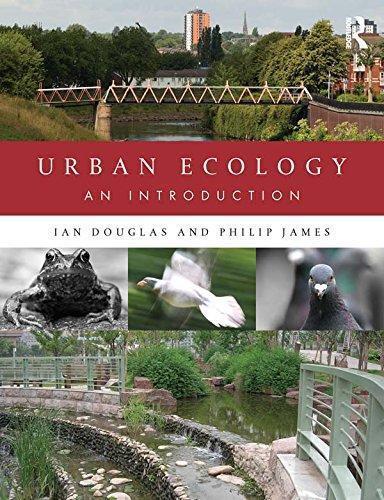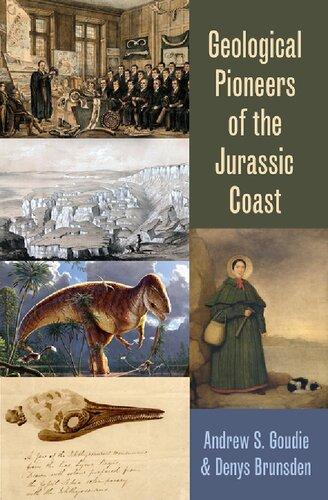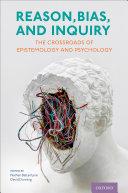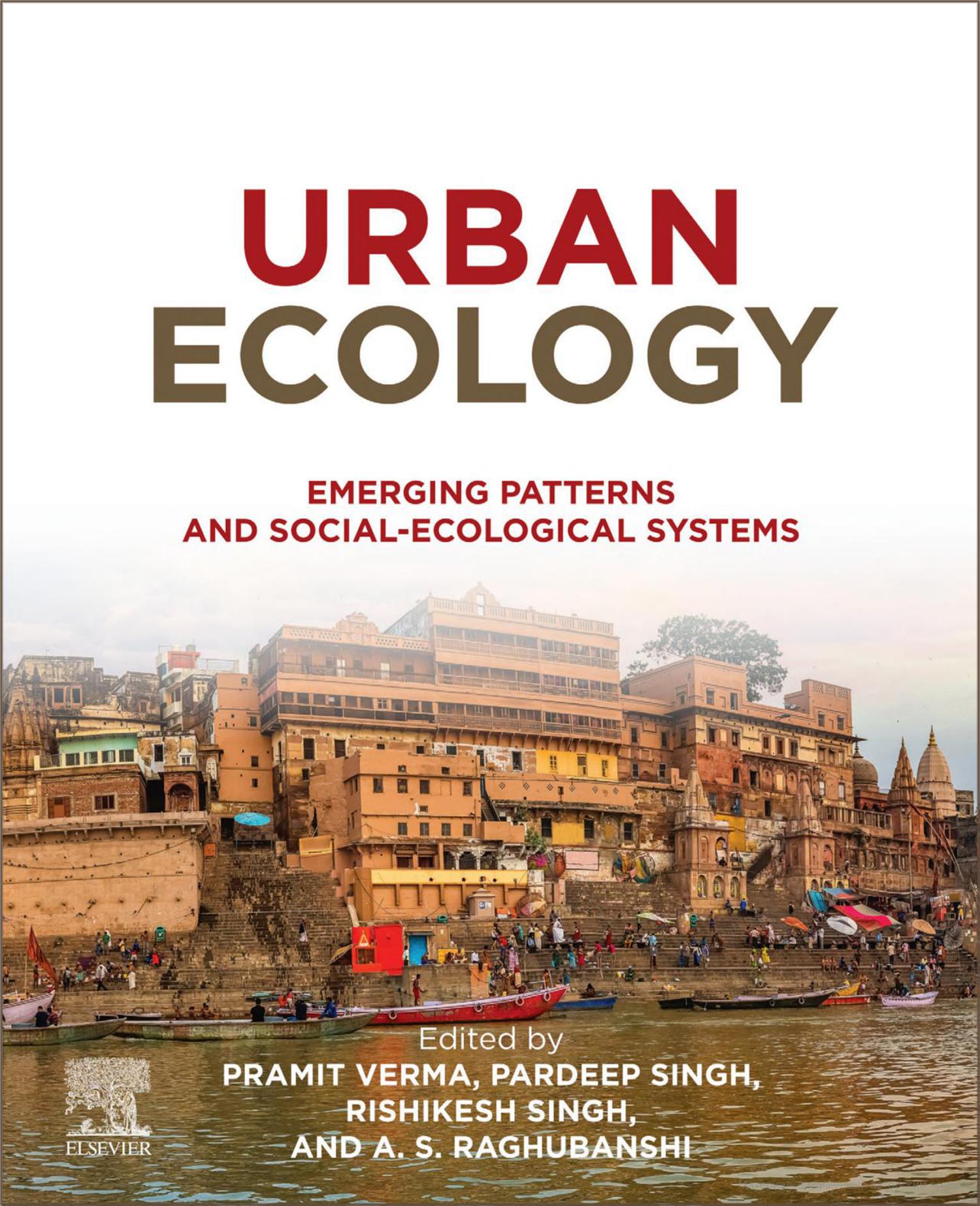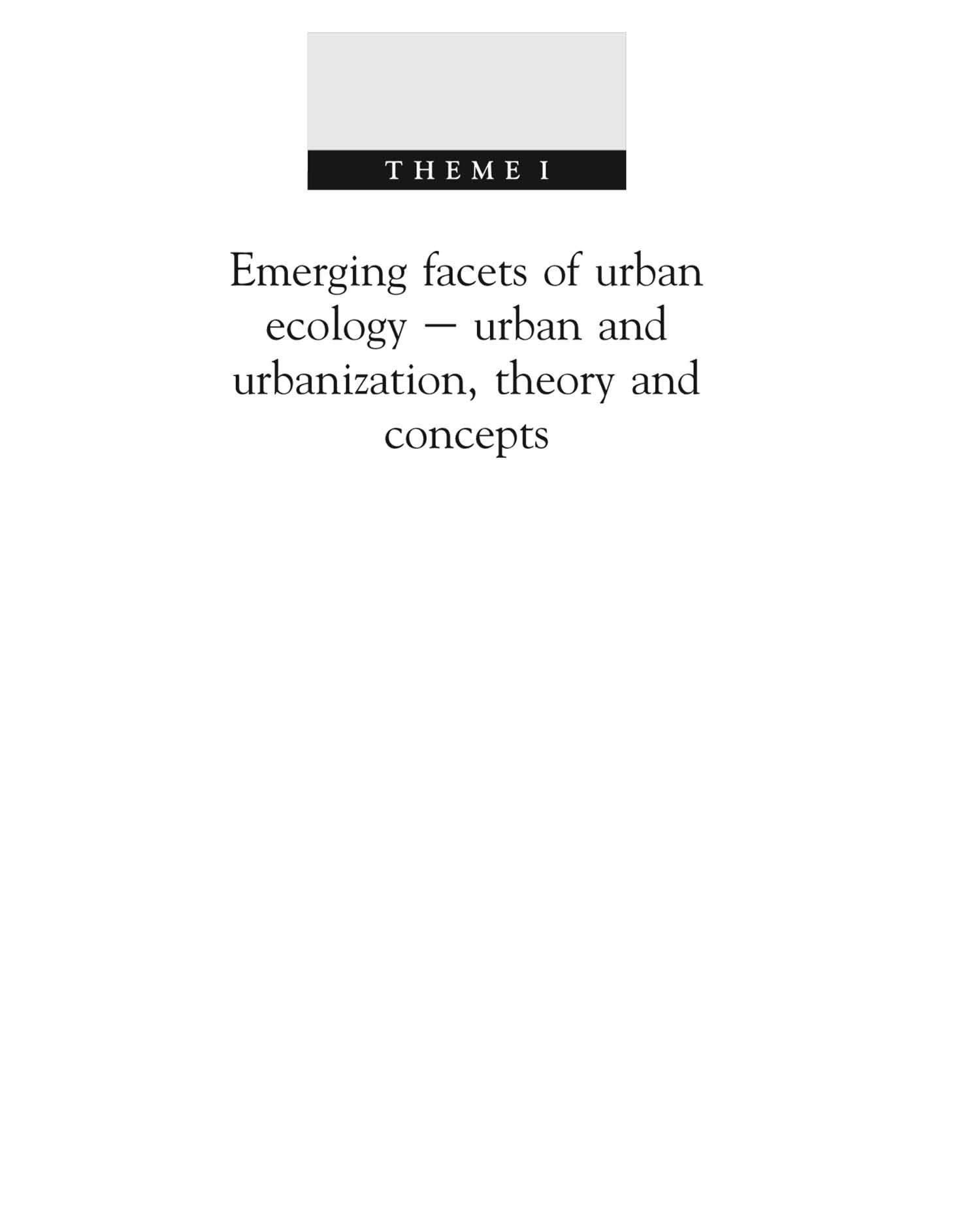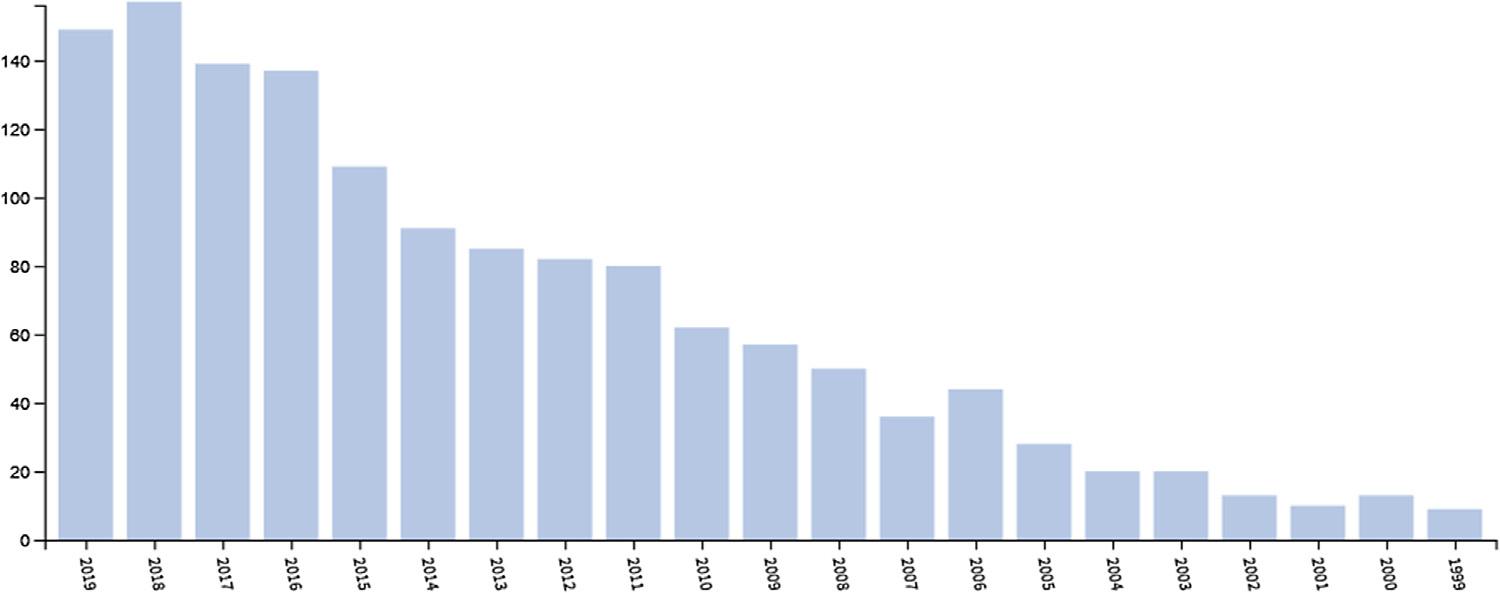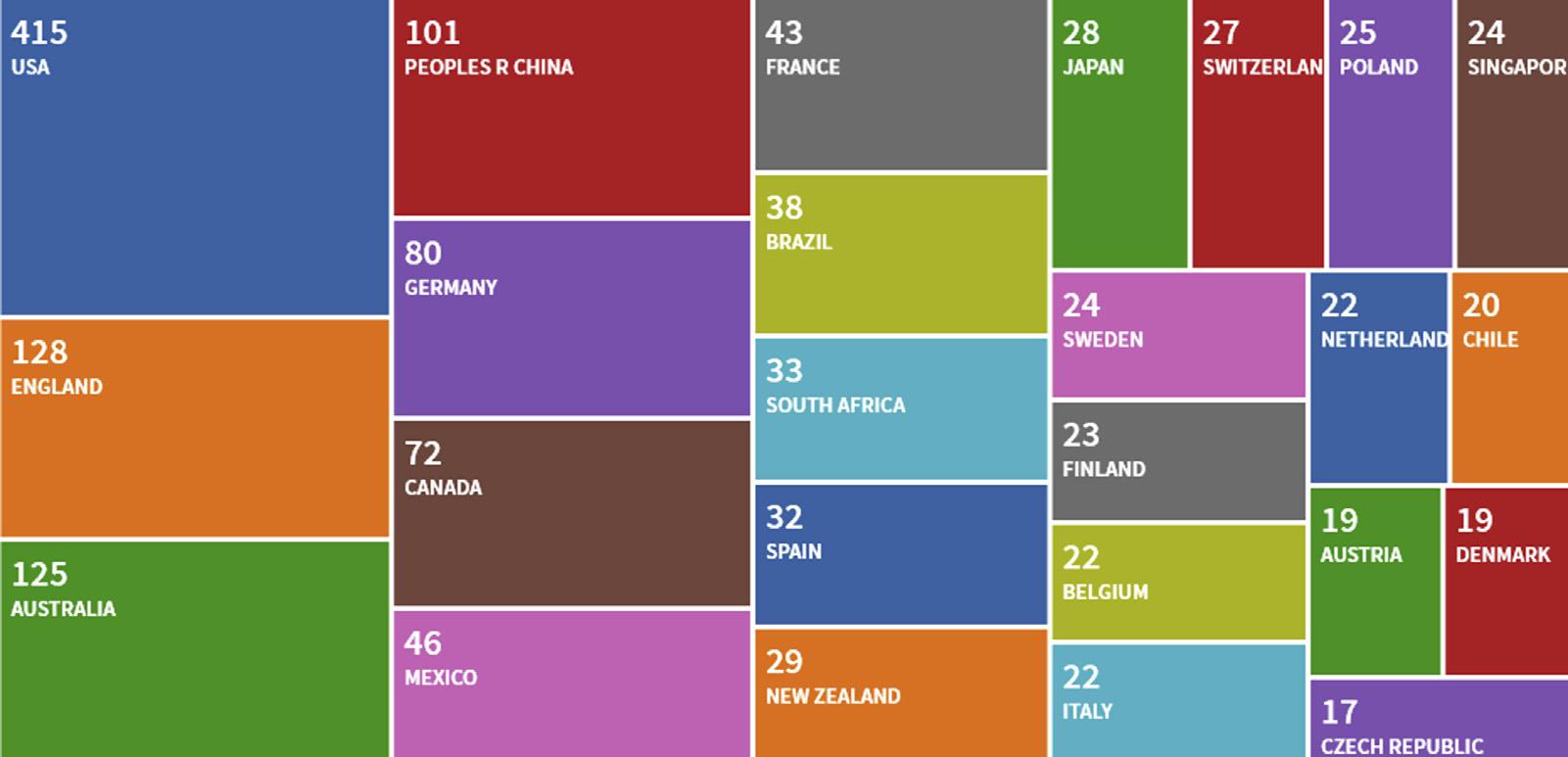UrbanEcology:EmergingPatternsandSocialEcologicalSystems1stEditionPramitVerma (Editor)
https://ebookmass.com/product/urban-ecology-emergingpatterns-and-social-ecological-systems-1st-edition-pramitverma-editor/
Instant digital products (PDF, ePub, MOBI) ready for you
Download now and discover formats that fit your needs...
Demand for Emerging Transportation Systems: Modeling Adoption, Satisfaction, and Mobility Patterns 1st Edition Constantinos Antoniou
https://ebookmass.com/product/demand-for-emerging-transportationsystems-modeling-adoption-satisfaction-and-mobility-patterns-1stedition-constantinos-antoniou/ ebookmass.com
Urban Ecology: An Introduction, 1st Edition – Ebook PDF Version
https://ebookmass.com/product/urban-ecology-an-introduction-1stedition-ebook-pdf-version/
ebookmass.com
Economics and Sustainability: Social-Ecological Perspectives 1st ed. Edition Karl Bruckmeier
https://ebookmass.com/product/economics-and-sustainability-socialecological-perspectives-1st-ed-edition-karl-bruckmeier/ ebookmass.com
Less is Moore: Moore Family Romance Series (Moore Family series Book 3) Anna Castor
https://ebookmass.com/product/less-is-moore-moore-family-romanceseries-moore-family-series-book-3-anna-castor/
ebookmass.com
Geological Pioneers of the Jurassic Coast Andrew S. Goudie
https://ebookmass.com/product/geological-pioneers-of-the-jurassiccoast-andrew-s-goudie/
ebookmass.com
Reason, Bias, and Inquiry: The Crossroads of Epistemology and Psychology Nathan Ballantyne
https://ebookmass.com/product/reason-bias-and-inquiry-the-crossroadsof-epistemology-and-psychology-nathan-ballantyne/
ebookmass.com
Belle Révolte Linsey Miller
https://ebookmass.com/product/belle-revolte-linsey-miller/
ebookmass.com
Our Wives Under The Sea Julia Armfield
https://ebookmass.com/product/our-wives-under-the-sea-julia-armfield/
ebookmass.com
Nothing Special Nicole Flattery
https://ebookmass.com/product/nothing-special-nicole-flattery/
ebookmass.com
https://ebookmass.com/product/prince-of-endless-tides-darkmournuniverse-book-4-ben-alderson/
ebookmass.com
URBAN ECOLOGY EMERGINGPATTERNSAND SOCIAL-ECOLOGICALSYSTEMS Editedby
PRAMIT VERMA IntegrativeEcologyLaboratory(IEL),InstituteofEnvironment & SustainableDevelopment(IESD), BanarasHinduUniversity(BHU),Varanasi,UttarPradesh,India
PARDEEP SINGH DepartmentofEnvironmentalStudies,PGDAVCollege,UniversityofDelhi,NewDelhi,India
RISHIKESH SINGH IntegrativeEcologyLaboratory(IEL),InstituteofEnvironment & SustainableDevelopment(IESD), BanarasHinduUniversity(BHU),Varanasi,UttarPradesh,India
A.S.RAGHUBANSHI IntegrativeEcologyLaboratory(IEL),InstituteofEnvironment & SustainableDevelopment(IESD), BanarasHinduUniversity(BHU),Varanasi,UttarPradesh,India
Elsevier
Radarweg29,POBox211,1000AEAmsterdam,Netherlands TheBoulevard,LangfordLane,Kidlington,OxfordOX51GB,UnitedKingdom 50HampshireStreet,5thFloor,Cambridge,MA02139,UnitedStates
Copyright © 2020ElsevierInc.Allrightsreserved.
Nopartofthispublicationmaybereproducedortransmittedinanyformorbyanymeans,electronicor mechanical,includingphotocopying,recording,oranyinformationstorageandretrievalsystem,without permissioninwritingfromthepublisher.Detailsonhowtoseekpermission,furtherinformationaboutthe Publisher’spermissionspoliciesandourarrangementswithorganizationssuchastheCopyrightClearance CenterandtheCopyrightLicensingAgency,canbefoundatourwebsite: www.elsevier.com/permissions
ThisbookandtheindividualcontributionscontainedinitareprotectedundercopyrightbythePublisher (otherthanasmaybenotedherein).
Notices Knowledgeandbestpracticeinthis fieldareconstantlychanging.Asnewresearchandexperiencebroaden ourunderstanding,changesinresearchmethods,professionalpractices,ormedicaltreatmentmaybecome necessary.
Practitionersandresearchersmustalwaysrelyontheirownexperienceandknowledgeinevaluatingand usinganyinformation,methods,compounds,orexperimentsdescribedherein.Inusingsuchinformationor methodstheyshouldbemindfuloftheirownsafetyandthesafetyofothers,includingpartiesforwhom theyhaveaprofessionalresponsibility.
Tothefullestextentofthelaw,neitherthePublishernortheauthors,contributors,oreditors,assumeany liabilityforanyinjuryand/ordamagetopersonsorpropertyasamatterofproductsliability,negligenceor otherwise,orfromanyuseoroperationofanymethods,products,instructions,orideascontainedinthe materialherein.
LibraryofCongressCataloging-in-PublicationData
AcatalogrecordforthisbookisavailablefromtheLibraryofCongress
BritishLibraryCataloguing-in-PublicationData
AcataloguerecordforthisbookisavailablefromtheBritishLibrary
ISBN:978-0-12-820730-7
ForinformationonallElsevierpublicationsvisitourwebsiteat https://www.elsevier.com/books-and-journals
Publisher: JoeHayton
AcquisitionsEditor: CandiceJanco
EditorialProjectManager: ChiaraGiglio
ProductionProjectManager: VijayarajPurushothaman
CoverDesigner: GregHarris
TypesetbyTNQTechnologies
Contributors LucaAfonso CentreforInvasionBiology, DepartmentofBotanyandZoology,StellenboschUniversity,Matieland,SouthAfrica
MuhammadAkmal WaterResearchLaboratory,DepartmentofFisheriesandAquaculture,UniversityofVeterinaryandAnimal Sciences,Lahore,Punjab,Pakistan
WaqasAli AppliedandEnvironmentalMicrobiologyLaboratory,DepartmentofWildlife andEcology,UniversityofVeterinaryand AnimalSciences,Lahore,Punjab,Pakistan
CarmenAntuña-Rozado VTTResearchCentre ofFinlandLtd.,Espoo,Finland
VidhuBansal ResearchScholar,Departmentof ArchitectureandRegionalPlanning(ARP), IndianInstituteofTechnology(IIT)Kharagpur, WestBengal,India
SunnyBansal ResearchScholar,Ranbirand ChitraGuptaSchoolofInfrastructureDesign andManagement(RCGSIDM),IndianInstitute ofTechnology(IIT)Kharagpur,WestBengal, India
AndréC.S.Batalhão EnvironmentalSciences, CenterforEnvironmentalandSustainability Research CENSE/NovaLisbonUniversity, Caparica,Portugal
RahulBhadouria DepartmentofBotany,UniversityofDelhi,Delhi,India
H.A.Bharath RCGSchoolofInfrastructure DesignandManagement,IndianInstituteof TechnologyKharagpur,WestBengal,India
AntoniaD.Bousbaine DépartementdeGéographie,LaboratoireLAPLEC,Universitéde Liège,Liège,Belgium
ChristopherBryant Géographie,Universitéde Montréal,Canada & AdjunctProfessor,School ofEnvironmentalDesignandRuralDevelopment,UniversityofGuelph,Montréal,Québec, Canada
SyedMohsinBukhari AppliedandEnvironmentalMicrobiologyLaboratory,Department ofWildlifeandEcology,UniversityofVeterinaryandAnimalSciences,Lahore,Punjab, Pakistan
M.C.Chandan RCGSchoolofInfrastructure DesignandManagement,IndianInstituteof TechnologyKharagpur,WestBengal,India
RanitChatterjee KyotoUniversity,Kyoto, Japan
ÁlvaroCorredor-Ochoa TampereUniversity, Tampere,Finland
AmbikaDabral ResilienceInnovationKnowledgeAcademy,NewDelhi,Delhi,India
LalatenduKeshariDas IITBombay,Mumbai, Maharashtra,India
RajkumariSanayaimaDevi DeenDayal UpadhyayaCollege(UniversityofDelhi),New Delhi,India
JuanDu DepartmentofArchitecture & Urban EcologiesDesignLab,FacultyofArchitecture, TheUniversityofHongKong,HongKong SpecialAdministrativeRegion,China
KarenJ.Esler DepartmentofConservation EcologyandEntomologyandCentreforInvasionBiology,StellenboschUniversity,Matieland,SouthAfrica
JoséFariña-Tojo UniversidadPolitécnicade Madrid,Madrid,Spain
MirijamGaertner Nürtingen-GeislingenUniversityofAppliedSciences(HFWU),Schelmenwasen4-8,Nürtingen,Germanyand CentreforInvasionBiology,Departmentof BotanyandZoology,StellenboschUniversity, Matieland,SouthAfrica
MateoGasparovic ChairofPhotogrammetry andRemoteSensing,FacultyofGeodesy,UniversityofZagreb,Zagreb,Croatia
SjirkGeerts DepartmentofConservationand MarineSciences,CapePeninsulaUniversityof Technology,CapeTown,SouthAfrica
DilawarHusain DepartmentofMechanical Engineering,SchoolofEngineeringandTechnology,SandipUniversity,Nashik,India
AliHussain AppliedandEnvironmental MicrobiologyLaboratory,Departmentof WildlifeandEcology,UniversityofVeterinary andAnimalSciences,Lahore,Punjab,Pakistan
SyedMakhdoomHussain Aquaculture ResearchLaboratory,DepartmentofZoology, GovernmentCollegeUniversity,Faisalabad, Punjab,Pakistan
ArshadJavid AppliedandEnvironmental MicrobiologyLaboratory,Departmentof WildlifeandEcology,UniversityofVeterinary andAnimalSciences,Lahore,Punjab,Pakistan
VaishaliKapoor DeenDayalUpadhyayaCollege(UniversityofDelhi),NewDelhi,India
SushilKumar SchoolofEnvironmentalSciences,JawaharlalNehruUniversity,NewDelhi, India
PyarimohanMaharana SchoolofEnvironmentalSciences,JawaharlalNehruUniversity, NewDelhi,India
R.K.Mall DST-MahamanaCentreofExcellence inClimateChangeResearch,InstituteofEnvironmentandSustainableDevelopment,BanarasHinduUniversity,Varanasi,UttarPradesh, India
Y.Milshina NationalResearchUniversity HigherSchoolofEconomics,Moscow,Russia
GolamMorshed DepartmentofInfrastructure Engineering,UniversityofInnsbruck,Innsbruck,Austria
G.Nimish RCGSchoolofInfrastructureDesign andManagement,IndianInstituteofTechnologyKharagpur,WestBengal,India
TahirNoor AppliedandEnvironmentalMicrobiologyLaboratory,DepartmentofWildlife andEcology,UniversityofVeterinaryand AnimalSciences,Lahore,Punjab,Pakistan
PiotrNowakowski SilesianUniversityofTechnology,Katowice,Poland
WenjianPan DepartmentofArchitecture & UrbanEcologiesDesignLab,FacultyofArchitecture,TheUniversityofHongKong,Hong KongSpecialAdministrativeRegion,China
D.Pavlova NationalResearchUniversity HigherSchoolofEconomics,Moscow,Russia
DanielaPerrotti UniversityofLouvain,Louvain-la-Neuve,Belgium
RaviPrakash DepartmentofMechanicalEngineering,MotilalNehruNationalInstituteof Technology,Allahabad,UttarPradesh,India
A.S.Raghubanshi IntegrativeEcologyLaboratory(IEL),InstituteofEnvironment & SustainableDevelopment(IESD),BanarasHindu University(BHU),Varanasi,UttarPradesh, India
JuhoRajaniemi TampereUniversity,Tampere, Finland
RumanaIslamSarker DepartmentofInfrastructureEngineering,UniversityofInnsbruck, Innsbruck,Austria
JoySen ProfessorandHead,Departmentof ArchitectureandRegionalPlanning;JointFaculty,RanbirandChitraGuptaSchoolofInfrastructureDesignandManagement,Indian InstituteofTechnology(IIT)Kharagpur, WestBengal,India
FariyaSharmeen InstituteforManagement Research,RadboudUniversity,Nijmegen,the Netherlands;FacultyofCivilEngineering andGeosciences,DelftUniversityofTechnology,Delft,theNetherlands
SujitkumarSikder LeibnizInstituteofEcologicalUrbanandRegionalDevelopment (IOER),Dresden,Germany
NidhiSingh DST-MahamanaCentreofExcellenceinClimateChangeResearch,Instituteof EnvironmentandSustainableDevelopment, BanarasHinduUniversity,Varanasi,Uttar Pradesh,India
RavindraPratapSingh ResearchScholar,IntegrativeEcologyLaboratory,InstituteofEnvironmentandSustainableDevelopment, BanarasiHinduUniversity,Varanasi,Uttar Pradesh,India
RishikeshSingh IntegrativeEcologyLaboratory(IEL),InstituteofEnvironment & SustainableDevelopment(IESD),BanarasHindu University(BHU),Varanasi,UttarPradesh, India
SaumyaSingh DST-MahamanaCentreof ExcellenceinClimateChangeResearch,InstituteofEnvironmentandSustainableDevelopment,BanarasHinduUniversity,Varanasi, UttarPradesh,India
AnitaSingh DepartmentofBotany,Banaras HinduUniversity,Varanasi,UttarPradesh, India
PardeepSingh DepartmentofEnvironmental Studies,PGDAVCollege,UniversityofDelhi, NewDelhi,India
RajeevPratapSingh DepartmentofEnvironmentandSustainableDevelopment,Instituteof EnvironmentandSustainableDevelopment, BanarasHinduUniversity,Varanasi,Uttar Pradesh,India
VaibhavSrivastava DepartmentofEnvironmentandSustainableDevelopment,Instituteof EnvironmentandSustainableDevelopment, BanarasHinduUniversity,Varanasi,Uttar Pradesh,India
PratapSrivastava ShyamaPrasadMukherjee Post-graduateCollege,UniversityofAllahabad,Allahabad,UttarPradesh,India
NualaStewart MasterofSustainableDevelopment,MacquarieUniversity,Sydney,NSW, Australia
DenilsonTeixeira EnvironmentalEngineering, FederalUniversityofGoiás,Goiânia,Brazil
SachchidanandTripathi DeenDayalUpadhyayaCollege(UniversityofDelhi),New Delhi,India
ShwetaUpadhyay IntegrativeEcologyLaboratory(IEL),InstituteofEnvironment & SustainableDevelopment(IESD),BanarasHindu University(BHU),Varanasi,UttarPradesh, India
BarkhaVaish DepartmentofEnvironmentand SustainableDevelopment,InstituteofEnvironmentandSustainableDevelopment,BanarasHinduUniversity,Varanasi,UttarPradesh, India
PramitVerma IntegrativeEcologyLaboratory (IEL),InstituteofEnvironment & Sustainable Development(IESD),BanarasHinduUniversity(BHU),Varanasi,UttarPradesh,India
MariuszWala PSTTransgórS.A.,Rybnik, Poland
Foreword HariniNagendra,SchoolofDevelopment, AzimPremjiUniversity,PixelB,PES Campus,ElectronicCity,HosurRoad,Bangalore560100,India.
In2007,forthe firsttimeever,morethan halfoftheworld’spopulationlivedand workedinurbanareas.Citiesoccupya relativelysmallfractionoftheworld’sland coverbuthaveanecological,economic,socialandculturalimpactthatiscompletely disproportionatetotheirsize.Urbanareas suckinresourcesincludingenergy,water, foodandpeoplefromthehinterlandand fromdistantpartsoftheworldandexport theirwaste,creativeideasandmoneytofarflungregions.Understandingtheecological impactofcitiesiscrucialintheeraofthe Anthropocene,ifwearetolearnhowto movetowardsamoresustainableworld (SetoandPandey,2019).
Urbanizationhasbeencriticizedforits unsustainability.Yetthefactthatmuchof theurbanareaprojectedtoexistby2050is yettobebuiltalsoprovidesuswithanopportunitytothinkdifferentlyaboutcities andtoreimagineadifferenttypeofurban: onethatismoresustainable,equitableand innovative(Parnelletal.,2018).Thatwindowofopportunity,ifindeeditdoesexist,is closingfast.Thereisarealandurgentneed forinterdisciplinaryresearchthatexamines theecologyofcitiesfromdiverseangles, usingdifferentdisciplinarylenses,methodologicalapproachesanddrawingoncase studiesfromallpartsoftheworld.
‘UrbanEcology:EmergingPatternsand Social-EcologicalSystems’ presentsanambitiousattempttoexamineanumberof diversefacetsofurbanecology,drawingon reviews,metaanalysesandcasestudies locatedindiversepartsoftheworld.Cities are,attheircore,social-ecologicalsystems (Wolframetal.,2016),andthisbookappropriatelytreatsthemassuch,combining researchthatlooksatinvasivespecies,urban metabolism,landcoverchange,airpollution andurbandisastermanagement,aswellas severalotherissuesrelevanttounderstandingthesustainabilityofurbansocialecologicalsystems.
Infar,toomanyreviewsandbooksonthe urban,fast-growingregionsoftheglobal Southoftengetleftoutorunderdeveloped, despitethefactthatSoutherncitiesare growingatmuchfasterratescomparedto theirNortherncounterparts(Nagendraetal., 2018).Thiseditedvolumepresentsa welcomedeparturefromthattrend, combininganumberofcasestudiesandreviewsoriginatingfromSouthAsiawith researchfromotherpartsoftheworld.
Inthiseraofclimatechange,citieswillbe someoftheworsthitintermsofurban sustainabilityandhumanwell-being (Estradaetal.,2017).Ecologicalintegrity, environmentalqualityandsocioeconomic equitywillplayamajorroleinensuringthe resilienceofcitiestoclimatechangeand othershocks.Urbansustainabilityandresiliencethuspresentimportantgoalsforthe
21stcentury.Giventhemagnitude,intensity andinterconnectednessofthechallenge ahead,thereisapressingneedforinterdisciplinaryresearchonurbansocial-ecological systemsthatinvestigatethechallengesof urbansustainabilityandresiliencefrom diverseangles.Thisbookpresentsa welcomestepinthisdirection.
References
Estrada,F.,Botzen,W.W.,Tol,R.S.,2017.Aglobaleconomicassessmentofcitypoliciestoreduceclimate changeimpacts.NatureClimateChange7,403 406.
Nagendra,H.,Bai,X.,Brondizio,E.S.,Lwasa,S.,2018. Theurbansouthandthepredicamentofglobal sustainability.NatureSustainability1,341 349.
Parnell,S.,Elmqvist,T.,McPhearson,T.,Nagendra,H., Sörlin,S.,2018.Introduction-Situatingknowledge andactionforanurbanplanet.In:Elmqvist,T.,etal. (Eds.),TheUrbanPlanet.CambridgeUniversity Press,pp.1 16.
Seto,K.C.,Pandey,B.,2019.UrbanLandUse:CentraltoBuildingaSustainableFuture.OneEarth1, 168 170.
Wolfram,M.,Frantzeskaki,N.,Maschmeyer,S.,2016. Cities,systemsandsustainability:Statusandperspectivesofresearchonurbantransformations. CurrentOpinioninEnvironmentalSustainability22, 18 25.
Urbanecology e currentstateof researchandconcepts PramitVerma1,RishikeshSingh1,PardeepSingh2, A.S.Raghubanshi1 1IntegrativeEcologyLaboratory(IEL),InstituteofEnvironment & SustainableDevelopment (IESD),BanarasHinduUniversity(BHU),Varanasi,UttarPradesh,India; 2Departmentof EnvironmentalStudies,PGDAVCollege,UniversityofDelhi,NewDelhi,India OUTLINE
1.Introduction4
1.1Whatisurbanecology?4
1.2Social ecologicalsystemsand urbanmetabolism5
2.Stateofresearchinurbanecology7
2.1Globaltrendsinthepast twodecades(1999 2019)7
2.2Country-wisedivisionofurban ecologyresearch(from2009to 2019)7
3.Urbanecology:conceptsand definitions8
3.1Theurbanboundary9
3.2Urbanmetabolism11
3.3Landuselandcoverchange12
3.4Modellingandremotesensing12
3.5Disasterriskreduction12
3.6Economiesofscale12
3.7Urbanecologicalfootprint13
3.8Urbansustainabilityindicators13
3.9Smartcity13
3.10Sustainablecity13
3.11Humanhealth13
3.12Integratedapproach14
3.13Governanceandplanning14
4.Conclusions14 References14 Furtherreading16
1.1Whatisurbanecology? AndrewarthaandBirch(1954) consideredecologytobeastudyoftheabundanceanddistributionoforganisms. Odum(1975) gavetheconceptofecosystemecology,whichfocussed ontheecosystem.However,abetterdefinitionofecologyisgivenbytheCarryInstituteof EcosystemStudies,focussingontheholisticandencompassingperspectiveofecology,as ‘thescienti ficstudyoftheprocessesinfluencingthedistributionandabundanceoforganisms, theinteractionsamongorganisms,andtheinteractionsbetweenorganismsandthetransformationand fluxofenergyandmatter’.Theimportantaspectofthisdefinitionisitsemphasis onthe ‘ processes ’ and ‘interactions’
Citieshavebecomeenginesofdevelopmentaswellasdriversofenvironmentalchange. Drawingontheaforementioneddescriptionofecology, urbanecology canbedefinedasthe studyoftherelationshipbetweenlivingorganismsandtheirenvironment,theirdistribution andabundance,theinteractionsbetweentheorganisms,andtransformationand fluxofenergyandmatter,inanurbanarea.Anurbanecosystemisthegrowthofhumanpopulation anditssupportinginfrastructureintheformofcities,towns,agglomerationsandmegacities.
Anurbanareaconsistsofanumberofprocessesandphysicalcomponents,suchasbiodiversityintheformofparks,animalsandtrees,humansandtheirsocioeconomicgroups,built structuresintheformofroadsandbuildings,transport,essentialservicessuchas finance, healthandwastedisposal,energy flowfromdifferenttypesofsourcessuchassolar,electricity,coal,LPG,wood,andsoonandmaterial flowintheformoffoodsupplies,building material(bricks,mortar,steel,etc.),wastegeneration,urbanagricultureandbiogeochemical cyclesinurbanareas.Thisisnotanexhaustivelist,butitgivesanideaabouttheurbanprocessesandcomponentswhichconstituteanurbanecosystem.
Thereare,however,twomajoraspectsofthis fieldthatmakeitmoreimportantforthepresenttimes.First,theecologyofurbanareasisnotrestrictedtotheurbanboundarywherethe apparentindicatorisobserved(VermaandRaghubanshi,2018),theindicatorbeingurbanization.Themeaningof ‘urbanarea’ andtheboundaryconcepthasbeenexploredingreater detailsin section(3.1).Second,sincehumanbeingsarethedominantorganisminanurban area,urbanecologyinevitablybecomesastudyfocusedonprocessesandinteractionmediatedbyhumanactions.Theresources,intheformofmatterandenergy,arenotnecessarily usedwheretheyarefound,andtheeffectsofhumanactionsarefeltatmultiplescalesand acrosssystemboundaries.Thematerialsandenergymayconsistofhydropowerenergy transmittedfromhydropowerdamslocatedataremotelocation,builtandothermaterials beingcarriedintothecitiesforconstructionpurposes,wastegeneratedfromurbanareasgettingdumpedinland fillsorotherlocationsand findingitswaytotheoceansandrivers,waste producedduringthemanufacturingoffoodsuppliestobeconsumedinurbanareas,emissiongeneratedduetofuelconsumptionorchangesinthebiogeochemicalcyclesduetourban growth.
Thisinputandoutputofmaterialbalanceistheexsituresourcemobilizationforurban growthduetotradeandglobalizationandismediatedbyanthropogenicsubsidizationof materialandenergybalance(Bai,2016).However,theimportanceattributedtothisphenomenonofurbangrowth,orthecreationofurbanecosystems,isduetothescaleatwhichithas
developedandcontinuestodosowithimpunity.Theurbanpopulationhasincreasedfroma mere ‘750million(1951)to4.2billion(2018)’ (Chapter18; UnitedNations,2018a,b)constitutingmorethan55%ofthetotalworldpopulation.About9.8billionpeoplewillbeliving inurbanareasby2050whichwillincreaseto11.2billionby2100(UnitedNations,2018a, b).Theresourcebaseforsuchamassivepopulationismadeavailableatthecostofnatural resources,environmentaldestructionandecosystemservices.Furthermore,apartfromthe environmentalfactors,theresourcedistributionandconsumptioninanurbanecosystemis notequitablesincethereisaninfluenceofsocialfactors,suchasincome,governanceandpolicy,civicamenities,andsoon.
TakingtheexampleofCO2 emissionfromelectricityconsumptionfromurbanhouseholds inIndia,citiessuchasAllahabadhadpercapitaemissionof12kgCO2 percapitapermonth, whereasChennaiemitted81kgCO2 percapitapermonth(Ahmadetal.,2014).Thereason hasbeenattributedtothelifestyleandincomedisparities.Ruralareaspredominantlyutilize traditionallysolidfuels,whichmightberesponsibleforhighercarbonemissionfromcooking activities.Thiskindofdisparitieswithinurbanecosystemsalsoexistindifferentprocesses andcomponentswhichdeterminethescaleandmagnitudeoftheeffectofurbanphenomena onitsenvironment.
1.2Social ecologicalsystemsandurbanmetabolism Citiesandurbanareasarehumanecosystemswheresocial,economic,biologicaland ecologicalcomponentsworktogetherformingasystemoffeedbackloopsandinteractions. Theseinteractionsinurbanecosystemsareguidedthroughhumanvaluesandperceptions (PickettandCadenasso,2013).Together,thisformsthesocial ecologicalsystem(SES)and determinestheecologyofurbanareas.Studiesintheecologyofwholecitiesstartedinthe 1970scentringonenergyandnutrientcycling.
Energy flowthroughanecosystemisconsideredunidirectional.It flowsfromthesunto theprimaryproducers,consumersanddecomposersandthentothenutrientpoolsacross thefoodweb.Inurbanecosystems,theenergyisconsumednotonlyalongthefoodchain butalsotoperformsocialandotherbasicactivities,suchascooking,heating,coolingand travelling.Asexplainedinanearlierexampleofurbanelectricityconsumption,allactivities usingfuelsandelectricitycontributetowardsenergy flowinanurbanecosystemwhichis differentfromthecalorificcontentoffoodcontent.Inanaturalecosystem,cyclingofmaterial alsotakesplace,identifiedasthecarbon,sulphur,phosphorus,nitrogen,oxygenandwater cycle.Duetourbanization,thesenutrientcyclesaredisturbedandmodified.Forexample, duetoinputoffertilizersandpesticides,thenatural fluxacrosssoilsystemsismodified, whichleadstohigherproductivityasanimmediateeffectbutlowerfertilityofsoilsover severalyears.Thisisoneoftheimpactsofurbandevelopment.Urbanareasarealsoconsideredthehotspotofconsumptionandwastegeneration.
Themetabolicapproachtowardsunderstandingthewatersupplyandairandwater pollutionincitiesoriginatedfromthebiologicalconceptofmetabolism(Restrepoand Morales-Pinzon,2018).Theurbanareaisconsideredasanorganismwithdynamicfunctions maintainingthelifeoftheurbansystem.Thematerialandenergy flowacrossitsboundaries iscomparedtothewayanorganismoracelltakesinnutrients,convertsthemintoenergy andexcretesthewasteoutofitsbody.Inurbansystems,materialbalanceconsistsofnatural
resourcerequirementsforactivitiessuchashousingandconstruction,transport,andsoon (SchandlandSchaffartzik,2015).Itissimplyhowrawmaterialor finishedproductsaretransferredtourbansystems,andwasteandtransformedproductscomeout.However,this flow ofmaterialtakesplaceateconomicandenvironmentalcosts.
Wolman’sworkinurbanmetabolismandecosystemsledtotheirrecognitionasanimportantareaofresearch.Wolman’shypotheticalcitygaveanestimateofmaterialbudgetfor food,fuelandwateruse,andsewage,refuseandairpollutantsthatamillionUScitizens wouldstoreandtransformaccordingto1965standardrates(Wolman,1965).Suchstudies forwholecitiesarerare,andanin-depthanalysisofafewcitiesbytheUNESCO’sMan andtheBiosphereProgrammeinthe1970sgavefurtherinsightintourbanmetabolism studies(Bai,2016).Urbanmetabolismisconcernedwiththe flowandtransformationofmaterialsandenergyinanurbansetup.Theseareclassifiedasinputsandoutputs(Deckeretal., 2000).ItwasfoundthatthematerialbalanceofHongKongwithapopulationof5.5million residentswasapproximatelyequaltothatofWolman’shypotheticalUScity(Deckeretal. 2000).Furthermore,3.65millionresidentsofSydney,in1990,metabolizedasmuchasWolman ’shypotheticalUScitywiththeexceptionofhighCO2 levels.Thecausewouldprobably bethehighernumberofautomobiles(Ibid).
Urbansustainabilityhasagreaterchanceofsuccess ‘whenthescalesofecologicalprocessesarewell-matchedwiththehumaninstitutionschargedwithmanaginghuman environmentinteractions’ (Leslieetal.,2015).Inthepastfewdecades,the fieldofurbanecologytransformedfromstudyingecologyinthecitytoecologyofthecity(Childersetal.,2014). Thishasledtothecouplingofurbanmetabolismprincipleswithhumanchoicesandpreferences,givingrisetoSES.Citiestransformrawmaterials,fuelandwaterintothebuiltstructure,humanbiomassandwaste.Energy flowandmaterialtransformationconceivedas urbanmetabolismdonotgiveacompletepictureoftheseurbancentres.Thehumanaspect, whenaddedtourbanmetabolism,providesamoreholisticapproachtowardsthestudyof thesecities.Recently,thisfactisbeingacceptedandtakenintoaccountofurbansystem studies.Thegrowthanddevelopmentofcitiesisaprocessoforganizationinwhichhuman choicesandpreferencesplayapivotalrole,workinginanecologicalmatrix.
Hence,thisbookdealswiththeemergingaspectsofurbanecologicalstudiesfromthe perspectiveofSES.Urbanecologycomprisesanumberofdimensionswhichhavebeenoutlinedinthisbook,like,urbanmetabolism[Chapter2],landuselandcoverchange[Chapters 3and4],disasterriskmanagement[Chapter5],urbanecosystemservices[Chapter6],urban greenspace[Chapter7],urbanagriculture[Chapter8],carbonemissions[Chapter9],transportincities[Chapter10],urbanairquality[Chapter11],watermanagement[Chapter12], urbanbiodiversity[Chapter13],wastemanagement[Chapters14,15and23],climatechange andhumanhealth[Chapter17],urbanheatislandeffect[Chapter17],sustainableandsmart cities[Chapters18and19],urbandesign[Chapters20and21],policyandmanagement [Chapter22]andnutrient fluxes[Chapter16],amongmanyothers.Thisbookdiscussesthe conceptualundertakingsandadvancesinthe fieldofurbanecology.Thenextsectiongives abriefdescriptionofthestateofresearchintourbanecologyfollowedbyadiscussionon themajorthemescoveredinthisbook.
2.Stateofresearchinurbanecology 2.1Globaltrendsinthepasttwodecades(1999 2019)
‘Urbanecology’ wasusedasakeywordtosearchtheWebofSciencecoredatabasefrom 1999to2019.Itwasfoundthatliteratureonurbanecologyhasgrownfromamere8articles in1999to158articlesin2018.Theperiodafter2008experiencedanexponentialriseinthe numberofworksofliteraturebeingpublishedrelatedtourbanecology(Fig.1.1).Theyear 2009alsosawthepublicationof ‘PlanetaryBoundaries:ExploringtheSafeOperatingSpace forHumanity’ by Rockstrometal.(2009).Itgavetheconceptofplanetaryboundariesfornine earthsystemsessentialforhumanstosustainthemselves.However,theunprecedented growthofurbanecosystemwithlittleregardtotheecologicalresiliencehasresultedin crossingoverofsomeplanetaryboundaries.Thelatestresearchsaysthatduetothedevelopmentofsociety,certainsystems,suchasclimatechange,biodiversityloss,landandnutrient cycles(nitrogenandphosphorus),have ‘gonebeyondtheirboundaryintounprecedentedterritories ’ (Steffenetal.,2015).Thiscouldbeapossiblereasonforalargenumberofstudiesin this fieldnow.
2.2Country-wisedivisionofurbanecologyresearch(from2009to2019) UrbanizationisexpectedtobeledbythecountriesofAfricaandAsia.IndiaandChinaare expectedtoseeanincreaseofone-thirdurbanpopulationbytheendof2020(Shenetal., 2011).IndiaandChina,havingtheworld’slargestruralpopulation,893and578million, respectively,willaccountfor35%oftheurbanpopulationgrowthbetween2018and2050 alongwithNigeria(UnitedNations,2018a,b).Asiahouses54%ofthecurrentworld’surban population,followedbyEuropeandAfrica(13%each).Thepaceofurbanizationisexpected tobethehighestinlow-andlower-middle-incomecountries(Singhetal.,2019).However, thisisnotreflectedintheliteraturefromthepast10years.WefoundthattheUnitedStates, EnglandandAustraliahadthemaximumnumberofpublicationsinthis field,followedby
FIGURE1.1 Publicationsrelatedto ‘urbanecology’ foreachyearfrom1999to2019indexedintheWebofScience corecollection(accessedon05December2019).
China,Germany,CanadaandMexico(Fig.1.2).AfricancountrieswererepresentedbySouth Africa,andAsiancountrieswererepresentedbyChinaandSingaporeinthetop25results. Thisdoesnotmeanthatvariousdimensionsofurbanecologyarenotbeingresearchedin othercountries;however,itdoesindicatethatthetransdisciplinarynatureofurbanecology mightbelackinginsuchstudies.
Thenextsectiondiscussesthevariousthemescoveredinthisbook.Itdescribestheconceptualundertakingsandadvancesinthe fieldofurbanecologycoveredinthisbook.
3.Urbanecology:conceptsanddefinitions The fieldofurbanecologycanbeapproachedinseveralways,forexample,fromthe perspectiveofmaterialandenergybalance,sustainabledevelopmentintheformofeconomic,socialandenvironmentalsustainabilityandcertainuniquephenomenaassociated withurbangrowth,suchasland-uselandcoverchangeandurbanheatislandeffect,urban designandarchitectureandhuman-centricintheformofsocialequityandhumanhealth, leadingtobetterresourcemanagementandsustainability,greenhousegas(GHG)emission andclimatechangeorecosystemservicesandbiodiversity.Thetransdisciplinarynatureof thissubjectwarrantsunderstandingthenexusbetweenhumanandecologicalfunctions throughtheaforementionedmentionedlenses(Fig.1.3).However,aspointedoutby Simon etal.(2018),thetransdisciplinarynatureofcoproductionis ‘complex,time-consuming,and oftenunpredictableintermsofoutcomes’,andtheseissuesgaingreaterimportancewhen comparativestudiesareundertaken.Morediscussiononthisaspectofurbanecology researchhasbeendoneinthelastchapterofthisbook.Thefollowingsectiondescribesthe conceptualbackground,whichwouldhelpthereaderperusethroughthisbook.
FIGURE1.2 Treediagramofthecountryandregion-wisenumberofdocumentsrelatedto ‘urbanecology’ publishedbetween2009and2019. FromWebofScience,accessedon05December2019.
3.1Theurbanboundary Thereisconfusionofterminologyusedfordescribingtheurbanecosystems,asthedefinitionofacityboundaryvariesacrosscountriesmakingcomparisonsdifficult.Duetoadvancementsingeospatialandremotesensingtechnology,agrowingscientificliteratureonthe studyofurbanecologyisemerging,whichwarrantsbringingforwardthedefinitionofthe cityatparwithurbanareaboundary.Inthissection,wehave firstdiscussedthedefinitions ofcityandrelatedterms,theirinappropriatenessintheimplementationofurbanecological studiesanddataavailabilityfollowedbysuggestions.
Definitionsforurbanareasforcity,townoranyotheradministrativeboundaryarehighly speci fictothecountry.Politicalcontextdeterminestheseboundariesalongwitheconomic andsocialconcerns(MacGregor-Fors,2011).Urbanlandcover,materialandenergybalance, urbanforestryandtreecover,urbanplanning,urbanwastegeneration,pollutioncontroland modelling,urbandisastermappingandmanyother fieldsrequireageospatialboundaryof constituentunitstocollectandanalyzedata.Therehavebeenattemptsatdefiningtermsused intheecologyofurbanareas,butultimatelyresearchfromusingsuchstudiesneedstobe implementedontheground,andthusitconfrontstheprevalentpaucityofdataandconfusioninthefunctional,structuralandadministrativedefinitionsofurbanareaboundaries.Accelerationanddiversificationofeconomicactivitiespushtheurbanboundariesbeyondtheir administrativeormunicipallimit.Fromanenvironmentalpointofview,thestructureand functionoftheurbancomponentinanurbanecosystemaremorethanthatactuallymanaged bythedistrictorcityadministration.
FIGURE1.3 Dimensionsofurbanecology awordofauthorkeywordsfromeachchapterinthebook.
Therearemanydefinitionsofthecityaccordingtodifferentcountries.Howacityis definedgenerallydependsonitspopulation,presenceofanadministrativeunitinthecity andanyothereconomicorsocialcharacteristicimportantforthatcountry.Basedonthenumberofpeople,citieshavebeendefinedbytotalpopulation,populationdensityorboth.Some countriesdesignatedothertermsforlargerurbanareascomprisingmorethanoneurbancore suchasurbanagglomeration(India),urbanizedarea(UnitedStates)andconurbations (UnitedKingdom).Acityhasatleast50,000populationinJapanandtheEuropeanUnion, and2500,2000and200populationintheUnitedStates,IsraelandIceland,respectively.A listofsomecountriesthathavedefinedcitiesaccordingtopopulationisgivenin Fig.1.4.
Foraresearcher,the firsttaskbeforeconductinganyurban-basedresearchistoidentifyand definethestudyarea.Generally,district,city,urbanagglomerationorblockincaseofrural areasisselected.Thenextstepistogatherdataandextracttheboundaryofthesite.Informationregardingtheboundaryofacityisgenerallynotavailableindigitalformatswhichmakes theprocessingofdataverydifficult.Ifavailable,suchdigitalinformationisoutofdate,for example,theurbanboundariesofcitiesinIndiaareexpandingatarategreaterthanthatat whichtheadministrationworks.Thisresultsinthepresenceofhigh-densityurbanpatches classifiedasruraloroutsidethemunicipalboundaryinlocalbodies’ recordsandescaping fullevaluationforurbanlandscapes.Satellitedataandgeographicalinformationsystems (GIS)playavitalroleinlandscape-basedstudies.
Confusionindataavailableforurbanareascanbebetterunderstoodbythefollowing example,forexample,.Dataregardingpopulation,literacy,numberofhouseholds,area andemploymentsectorareavailableatward(sub-city)andvillagelevelfortowns(urban) andblocks(rural),respectively.Calculationofsecondarymetricsandchangeinthesequantitiesispossibleforthesecategoriesattheaforementionedurbanorruralunits.Information regardingamenitiesandassetsisavailableatsubdistrict(tehsil)level.Theboundaryofasubdistrictisindependentoftheboundaryofacity,townorvillage.Thus,metricscalculated fromsuchdataareapplicableatdifferentlevelsofurbanareas,eachhavingadifferentpopulation,andthusposeadifficultyforresearcherswhencalculatingpercapitametricsThis examplecomesfromIndia,wherecitiesareconstitutedinsideadistrict,however,itpoints outtheconfusing,oftenoverlappingandsometimesabsentdataregardingurbanareas. Othercountriesmayhavebettersystemsofadministrativedemarcation,however,thepoint remainsthatinordertostudyurbansystems,thedatashouldre flectthegroundreality. Needforauniformurbanboundarybecomesmoreapparentwhenwelookaturbanareas fromalandscapeperspective.Thescaleatwhichanurbanareaisperceivedshouldmatchthe scaleatwhichitisexpandingandinformationisavailable.Therateofurbanizationshouldbe takenintoaccounttorevisethedefinitionofacity.Thus,thedefinitionneedstobeversatile andabletocopewithrapidurbanexpansionaswellasuniformtomakecomparisonsacross regionspossible.Abetterwaytodefineacityisbytakingintoaccountpopulation,populationdensity,employmentandtheirconcentrationgradientidentifiedthroughremotesensing andGIS.AGISgridwiththeselayersandathresholdvalueofconcentrationgradientfor definingurban,semiurbanandruralcanbeusedsimilartothemethodologyfollowedina EuropeanCommissionworkingpaper(Dijkstraetal.2018)butadditionallyhavingwell-
3.Urbanecology:conceptsandde
City/Town by popula on New Zealand, 1000 030006000900012000150001800021000
Bahrain, 2500
Guam, 2500
Spain, 2000
Norway, 200
Slovakia, 5000
Netherlands, 2000
Lithuania, 3000
Ireland, 1500
Iceland, 200
France, 2000
Czech Republic, 2000
Austria, 5000
Albania, 400
Israel, 2000
Venezeula, 1000
Bolivia, 2000
Argen na, 2000
USA, 2500
Switzerland, 10000
Portugal, 10000
Greece, 10000
Turkey, 20001
Malaysia, 10000
India, 5000
Puerto Rico, 2500
Panama, 1500
Mexico, 2500
Greenland, 200
Cuba, 2000
Canada, 1000
Liberia, 2000
Ethiopia, 2000
Equatorial Guinea, 1500
Botswana, 5000
Zambia, 5000
Sudan, 5000
Senegal, 10000
Popula on
FIGURE1.4 City/townbypopulationinsomecountries(UNSD,2015).
definedeconomicandemploymentthresholdssimilartoprerequisitesalreadypresentinthe definitionoftownsaccordingtoCensusofIndia(2011).Thresholddefiningthesevaluesmay differfromcountries.Thiscanresultinauniformdefinitionofcitiesandneedstobeinvestigatedfurther.
3.2Urbanmetabolism Urbanmetabolismdealswithurbansustainabilityindicators,GHGemission,policyanalysisandtheirapplicationtourbandesign(Kennedyetal.,2011).Asmentionedearlier,the urbansystemdependsonresourcestosustainitself,intheformofa flowofmaterialsand
energy,andthevarioussocialandecologicalinteractionsactlikethe ‘metabolism’ ofliving organisms.Urbanmetabolismisthestudyofthe flowofmatterandenergythroughacity providingamodelforhumanandnatureinteractions.
3.3Landuselandcoverchange Landcoverchangedenotesachangeincertaincontinuouscharacteristicsofthelandsuchas vegetationtype,soilproperties,andsoon,whereasland-usechangeconsistsofanalterationin thewaycertainareaoflandisbeingusedormanagedbyhumans(Pateletal.,2019).Thisinvolvesthetransformationinthenaturallandscapeduetourbangrowth.Itisinterestingtonote thatthischangeisresponsibleforanumberoflocalandglobaleffects,includingbiodiversity lossanditsassociatedeffectsonhumanhealth,andthelossofhabitatandecosystemservices (Pateletal.,2019).Itismainlydrivenbyurbangrowthandisparticularlyimportantnowfor developingandunderdevelopedcountries.However,naturalcausesmayresultinlandcover change,butland-usechangerequireshumanintervention(Joshietal.,2016).
3.4Modellingandremotesensing Tounderstandurbangrowthandquantifyitsimpactsandfuturetrajectories,certainmathematicaltoolsareused,whichisknownasmodelling.Modellingurbangrowthcanprovidebetter insightsintomanagingurbanizationanditsrelatedeffects.Datacollectedfromsatellitesand othersensorsareusedinmodellingtechniques.Developmentofmodellingtechniqueswhich involveartificialneuralnetwork,fuzzylogandothernonparametricapproacheshavegreatly increasedtheaccuracyofmappingurbansystems(VermaandRaghubanshi,2019,2020). Markov-chainandSLEUTHbasedoncellularautomataaresomeofthemodelswhichhelpin thepredictionofurbangrowth(ChandanandBharath,2018).Bigdataandcrowdsourceddata platformsarenowincreasingtheirimpactonurbanmodelling(Johnsonetal.,2017).
3.5Disasterriskreduction Rapidurbangrowthhasresultedinunplannedsettlementsoftenwithhighpopulationdensities.Itisfoundthatthesociallyweakersectionsofsocietyinhabitthesekindsofsettlement (Chatterjeeetal.,2015).Risk,duetonaturalandanthropogenicdisasters,isincreasedinthese placesofunplannedbuiltareas.Disaster-inducedandrural-to-urbanmigrationfurtherputsa burdenonurbanresources(Chapter5).Preventingthisriskinvolvesincreasingtheresilienceof thepeople.Thisrelianceincludesanumberofpolicychangeswhichinvariablyincludeurban designandsocialresilienceintheformofeducation,incomeanddemographics.Theseactivitiesmakeupthedisasterriskreductionstrategieswhichhavebecomemoreimportantdueto theincreaseinthefrequencyofnaturaldisastersduetoclimatechange.
3.6Economiesofscale Thisisanimportantconceptinthe fieldofurbanecology.Ithasbeenobservedthatcities followscalinglawsdependingontheirsize. BettencourtandWest(2010) putforwardthree observations (1)duetointenseuseofinfrastructure,thespacerequiredpercapitadecreases;
(2)cocioeconomicactivitiesincreaseleadingtohigherproductivity;and(3)socioeconomic activitiesdiversifyleadingtobetteropportunities.Theyshowedthatfordoublingthepopulation ofacity,about85%ofinfrastructuredevelopmentisneeded(BettencourtandWest,2010).This indicatesthatcitiesessentiallygrowlikeanorganismwithsomesavingsasthesizeincreases. Thesesavingsareintheformofcostormaterialbenefitswhicharemadeduetotheincreasein scale.However,thismaynotindicatethatsuchgrowthisnecessarilysustainable.
3.7Urbanecologicalfootprint Theurbanecologicalfootprintisessentiallytheamountofearthneededtosustainandurban areasandrecycleorabsorbitswasteandemissions.Itdenotesthenumberofresourcesneeded toprovidethenecessaryrawmaterials(naturalresources,ecosystemservices,etc.)andtheearth’ s capacitytoabsorborrecyclethewastematerialgeneratedincludinggaseousemission(likeGHGs). Theresourceutilizationbyurbanareasresultsinwastegenerationandemissions.Themagnitude ofthisgenerationhascrossedthecriticalthresholdofplanetaryboundaries(Steffenetal.,2015).
3.8Urbansustainabilityindicators Indicatorsareanessentialpartofassessingtheprogressofanysystem.Urbansustainability indicatorsincludeanumberofdimensionsdealingwithvariousaspectsofurbansystems, includingpolicyandgovernance,demographics,economics,environmentandenergy.Indicators couldbeintheformofgrossdomesticproduct,Ginicoefficientorambientairquality.Indicators alsoprovideanunderstandingofthephenomenabeingstudied(VermaandRaghubanshi,2018).
3.9Smartcity AccordingtotheInternationalBusinessMachines(IBM),asmartcityisonethatmakes optimaluseoftheavailableinformationaboutvariousprocessestobetterdeliverandrecognizeitsoperationsandmakeoptimumuseofresourcesavailablebybalancingthesocial, commercialandenvironmentalneedsofthecity(NamandPardo,2011).Thisconcepthas growntoinvolvesustainabilityasapartofinformationandcommunicationtechnology usedtocreateasmartcity.Efficiencyandapplicationofinformationandcommunication technologyaretheessentialpartsofasmartcity.
3.10Sustainablecity Urbanecosystems ‘whichareethical,effective(healthyandequitable),zero-wastegenerating,self-regulating,resilient,self-renewing, flexible,psychologicallyfulfillingandcooperative’ canbetermedassustainable(NewmanandJennings,2012;Dizdaroglu,2015).
3.11Humanhealth Humansshapetheecologyofcitiesaswellasarein fluencedbythetypeofenvironment theycreate.Humanhealthisanemergingaspectofurbanecologyresearch,especiallydueto theeffectoftheurbanecosystemonhumanhealth,intheformoflackofgreenspaces,air
quality,urbanheatislandeffect,waterandairpollution,psychologicalandmentalhealth, andurbandesign(Giles-Cortietal.,2016).
3.12Integratedapproach Ostrom(2009) suggestedthatthestudyofSESrequiresstudyofthe ‘complex,multivariable,nonlinear,cross-scaleandchangingsystems’.Urbanecologywhenobservedasanintegratedandtransdisciplinarysubjectwouldbeabletoofferbetterinsightsintourban sustainability,andthus,anintegratedapproachisrequiredinthisdiscipline.
3.13Governanceandplanning Implementationofsustainabilitypracticestoensureahealthyurbanecosystemremainsa challenge(VermaandRaghubanshi,2018). VermaandRaghubanshi(2018) identifiedtwo majorchallengesintheapplicationofsustainabilitymonitoringprogramsinurbanareas astheselectionofrelevantindicatorsfollowedbytheirapplication.However,sustaining suchmeasuresrequiresrepeatedassessmentsandpoliciestailoredaccordingtolocalconditions.Governanceandplanningplayanimportantroleindeterminingthenatureofurban ecosystems,includingeducation,urbandesignandplanning,environmentallawsandtheir implementation;hence,theyremainoneofthemostessentialfeaturesinthissubject.
4.Conclusions Theprecedingsectiondescribedsomeoftheconceptsincludingtheurbanboundary,urbanhealth,modellingandremotesensing,smartandsustainablecityandindicatorsofsustainability,whichhavebeenusedinthisbook.Sincecitiescontainanumberofcomponents whicharemainlycreatedbyhumans,theyfunctionatdifferenttrajectorythannaturalecosystems.Currently,citiesareplaguedbyseveralproblemssuchasbiodiversityloss,airquality,greenspaces,lackofopenspace,andsoon.However,itisbelievedthatcitiesareresilient ecosystems,andbetterperformingcitiescontinuetodosoforseveraldecades.Policybased onanunderstandingoftheworkingsofdifferentcomponentsinurbanecosystemswould helpincreatingasustainablefuture.
References Ahmad,S.,Mathai,M.V.,Parayil,G.,2014.Householdelectricityaccess,availabilityandhumanwell-being:evidence fromIndia.EnergyPolicy69,308 315.
Andrewartha,H.G.,Birch,L.C.,1954.TheDistributionandAbundanceofAnimals.Univ.ofChicagoPress. Bai,X.,2016.Eightenergyandmaterial flowcharacteristicsofurbanecosystems.Ambio45(7),819 830. Bettencourt,L.,West,G.,2010.Aunifiedtheoryofurbanliving.Nature467(7318),912 913.
Chandan,M.C.,Bharath,H.A.,2018.ModellingurbantransitionusingcellularautomatabasedSleuthmodelling.In: 2018IEEESymposiumSeriesonComputationalIntelligence(SSCI).IEEE,pp.1656 1663.
Chatterjee,R.,Shiwaku,K.,Gupta,R.D.,Nakano,G.,Shaw,R.,2015.BangkoktoSendaiandbeyond:implicationsfor disasterriskreductioninAsia.InternationalJournalofDisasterRiskScience6(2),177 188.
Childers,D.L.,Pickett,S.T.,Grove,J.M.,Ogden,L.,Whitmer,A.,2014.Advancingurbansustainabilitytheoryand action:challengesandopportunities.LandscapeandUrbanPlanning125,320 328.
Decker,E.H.,Elliott,S.,Smith,F.A.,Blake,D.R.,Rowland,F.S.,2000.AnnualReviewofEnergyandtheEnvironment 685 740.
Dijkstra,L.,Florczyk,A.,Freire,S.,Kemper,T.,Pesaresi,M.,Schiavina,M.,2018.Applyingthedegreeofurbanisation totheglobe:Anewharmoniseddefinitionrevealsadifferentpictureofglobalurbanisation.In:Proceedingsofthe 16thIAOSConference:BetterStatisticsforBetterLives,pp.19 20.Paris,France. Dizdaroglu,D.,2015.Developingmicro-levelurbanecosystemindicatorsforsustainabilityassessment.EnvironmentalImpactAssessmentReview54,119 124.
Giles-Corti,B.,Vernez-Moudon,A.,Reis,R.,Turrell,G.,Dannenberg,A.L.,Badland,H.,Owen,N.,2016.Cityplanningandpopulationhealth:aglobalchallenge.Thelancet388(10062),2912 2924.
Johnson,B.A.,Iizuka,K.,Bragais,M.A.,Endo,I.,Magcale-Macandog,D.B.,2017.Employingcrowdsourced geographicdataandmulti-temporal/multi-sensorsatelliteimagerytomonitorlandcoverchange:acasestudy inanurbanizingregionofthePhilippines.Computers,EnvironmentandUrbanSystems64,184 193.
Joshi,N.,Baumann,M.,Ehammer,A.,Fensholt,R.,Grogan,K.,Hostert,P.,Reiche,J.,2016.Areviewoftheapplicationofopticalandradarremotesensingdatafusiontolandusemappingandmonitoring.RemoteSensing8(1), 70.
Kennedy,C.,Pincetl,S.,Bunje,P.,2011.Thestudyofurbanmetabolismanditsapplicationstourbanplanningand design.EnvironmentalPollution159(8 9),1965 1973.
Leslie,H.M.,Basurto,X.,Nenadovic,M.,Sievanen,L.,Cavanaugh,K.C.,Cota-Nieto,J.J.,Nagavarapu,S.,2015.Operationalizingthesocial-ecologicalsystemsframeworktoassesssustainability.ProceedingsoftheNationalAcademyofSciences112(19),5979 5984.
MacGregor-Fors,I.,2011.Misconceptionsormisunderstandings?Onthestandardizationofbasictermsanddefinitionsinurbanecology.LandscapeandUrbanPlanning100(4),347 349.
Nam,T.,Pardo,T.A.,June2011.Conceptualizingsmartcitywithdimensionsoftechnology,people,andinstitutions. In:Proceedingsofthe12thAnnualInternationalDigitalGovernmentResearchConference:DigitalGovernment InnovationinChallengingTimes.ACM,pp.282 291.
Newman,P.,Jennings,I.,2012.CitiesasSustainableEcosystems:PrinciplesandPractices.IslandPress. Odum,E.P.,1975.Ecology,theLinkbetweentheNaturalandtheSocialSciences.OxfordandIBHPublishing. Ostrom,E.,2009.Ageneralframeworkforanalyzingsustainabilityofsocial-ecologicalsystems.Science325(5939), 419 422.
Patel,S.K.,Verma,P.,Singh,G.S.,2019.Agriculturalgrowthandlanduselandcoverchangeinperi-urbanIndia. EnvironmentalMonitoringandAssessment191(9),600.
Pickett,S.T.A.,Cadenasso,M.L.,2013.In:Leemans,R.(Ed.),EcologicalSystems. https://doi.org/10.1007/978-14614-5755-8
Restrepo,J.D.C.,Morales-Pinzon,T.,2018.Urbanmetabolismandsustainability:precedents,genesisandresearch perspectives.Resources,ConservationandRecycling131,216 224.
Rockström,J.,Steffen,W.,Noone,K.,Persson,Å.,Chapin,F.S.,Lambin,E.F.,Nykvist,B.,2009.Asafeoperatingspace forhumanity.Nature461(7263),472 475.
Schandl,H.,Schaffartzik,A.,2015.MaterialFlowAnalysis.
Shen,L.Y.,Ochoa,J.J.,Shah,M.N.,Zhang,X.,2011.Theapplicationofurbansustainabilityindicators Acomparison betweenvariouspractices.HabitatInternational35(1),17 29.
Simon,D.,Palmer,H.,Riise,J.,Smit,W.,Valencia,S.,2018.Thechallengesoftransdisciplinaryknowledgeproduction:fromunilocaltocomparativeresearch.EnvironmentandUrbanization30(2),481 500.
Singh,N.,Mhawish,A.,Ghosh,S.,Banerjee,T.,Mall,R.K.,2019.Attributingmortalityfromtemperatureextremes:a timeseriesanalysisinVaranasi,India.TheScienceoftheTotalEnvironment665,453 464. Steffen,W.,Richardson,K.,Rockström,J.,Cornell,S.E.,Fetzer,I.,Bennett,E.M.,Folke,C.,2015.Planetaryboundaries:guidinghumandevelopmentonachangingplanet.Science347(6223),1259855. UnitedNations,DepartmentofEconomicandSocialAffairs,2018a.WorldPopulationProjectedtoReach9.8Billion in2050,and11.12Billionin2100.Retrievedon31December2018. https://www.un.org/development/desa/en/ news/population/world-population-prospects-2017.html UnitedNations,DepartmentofEconomicandSocialAffairs,2018b.68%oftheWorldPopulationProjectedtoLivein UrbanAreasby2050,SaysUN.Retrievedon31December2019. https://www.un.org/development/desa/en/ news/population/2018-revision-of-world-urbanization-prospects.html
UNSD UnitedNationsStatisticsDivision,2015.Table6 DemographicYearbook2015.Availableat: https:// unstats.un.org/unsd/demographic-social/products/dyb/documents/dyb2015/Notes06.pdf.(Accessed18 December2019).
Verma,P.,Raghubanshi,A.S.,2018.Urbansustainabilityindicators:challengesandopportunities.EcologicalIndicators93,282 291.
Verma,P.,Raghubanshi,A.S.,2019.Ruraldevelopmentandlanduselandcoverchangeinarapidlydeveloping agrarianSouthAsianlandscape.RemoteSensingApplications:SocietyandEnvironment14,138 147.
Verma,P.,Raghubanshi,A.,Srivastava,P.K.,Raghubanshi,A.S.,2020.Appraisalofkappa-basedmetricsand disagreementindicesofaccuracyassessmentforparametricandnonparametrictechniquesusedinLULCclassificationandchangedetection.ModelingEarthSystemsandEnvironment1 15. Wolman,A.,1965.Themetabolismofcities.ScientificAmerican213(3),178 193.
Furtherreading Ahmad,S.,Baiocchi,G.,Creutzig,F.,2015.CO2 emissionsfromdirectenergyuseofurbanhouseholdsinIndia.Environmentalscience & technology49(19),11312 11320. 1.Urbanecology
Urbanmetabolism:oldchallenges, newfrontiers,andtheresearch agendaahead DanielaPerrotti
UniversityofLouvain,Louvain-la-Neuve,Belgium
OUTLINE 1.Urbanmetabolism:fromconceptto methods17
1.1Oneconcept,avarietyofmethods17
1.2Avarietyofpracticalapplications andend-users20
2.Challengesandnewfrontiersfor urbanmetabolismresearch21
2.1Understandingdistinctconceptual underpinningsandcommonmethods acrossecologicalsciences21
2.2Expressinginterdependencybetween biogeochemicalcyclesand
socioeconomic flowsoftheurban metabolism23
2.3Linkingurbanmetabolismresearch withdesign:systematizingthe growingevidence-baseonnaturebasedsolutions25
3.Conclusions:atentativeresearch agenda26 References28
1.Urbanmetabolism:fromconcepttomethods
1.1Oneconcept,avarietyofmethods
Urbanmetabolism(UM)isaninterdisciplinaryresearch field,spanningacrossdisciplines asdifferentasindustrialecology,urbanecology,politicalecologyandpolitical-industrial
2.Urbanmetabolism:oldchallenges,newfrontiers,andtheresearchagendaahead
ecology(Wachsmuth,2012;CastànBrotoetal.,2012;Newelletal.,2017).Eachofthesedisciplinesencompassesdifferentschools,whichfocusonawiderangeofmethodsanddiversifiedscalesofanalysis.Inquantitativeterms,industrialecologyisthemostinfluential researchpathinUMstudies(NewellandCousins,2014).Industrialecologyapproachesto resourceaccountinghaveextendedbeyondtheoriginalfocusonthemetabolismofindustrial systemsandindustrialsymbiosistoincludethebroaderscaleofcities(Bai,2007;Kennedy etal.,2012).Inindustrialecology,UMisdefinedas ‘thesumtotalofthetechnicalandsocioeconomicprocessesthatoccurincities,resultingingrowth,productionofenergy,and eliminationofwaste ’ (Kennedyetal.,2007).InUMresearch,citiesarestudiedasopen systemswhosemetabolismistheresultoftheinteractionswithother(closeorremote) anthropogenicsystemsandthenaturalenvironment.Beyondtheconcept,industrialecology UMresearchprovidesanalyticaltoolsandmethodstoassesstheresourceintensityofurban systemsand,whenappliedinpolicyandpractice,toenableresourceuseoptimization.
MaterialFlowAnalysis(MFA)isthemostusedmethodforresourceaccountinginindustrialecology(Cui,2018; Kennedyetal.,2011).Ratherthanasinglemodel,itconsistsofafamilyofmass-balancemodelsthatcanvaryfromnationaltolocalscalesandincludesaggregate materialsandenergyaccountsaswellasassessmentsofasinglematerialorsubstance.The Eurostat ’sEconomy-widematerial flowaccounting(EW-MFA)isthemostwidelyspread methodwithintheMFAfamilyandrepresentsthebasisofstandardstatisticalreportingin theEU(Eurostat,2001).TheEW-MFAwasintroducedinthelate1960s(AyresandKneese, 1969)andfurtherdevelopedinthe1990s(BacciniandBrunner,1991;Bringezu,1997).Itwas initiallyconceivedasastandardizedmethodfor flowaccountingatthescaleofnationaleconomies. Hammeretal.(2003) adaptedtheEW-MFAatthecityandregionallevel,openingthe pathtoastillgrowingnumberofapplicationstourbansystems(e.g., HammerandGiljum, 2006;Barles,2009;Voskampetal.,2017;Bahersetal.,2019).IntheEW-MFA,onlymaterial inputandoutput flowsenteringorleavingthesystemareconsidered,excludingin-boundary processesanddynamicsassociatedwithresourceuse.Hencethemodelresultsina ‘black box’ representationofthesocioeconomicsystemitself.Themethodhasinthepastdecades gainedmaturitythankstoconsiderableeffortsbythescientificcommunitytoworkconsistentlytowardmethodologicalharmonizationandstandardizationacrossexistingdatasets (Fischer-Kowalskietal.,2011).Inthepastfewyearsresearcheffortshaveconcentratedon integratingtheEW-MFAwithothermethodsfortheassessmentofurbanresource flows (Daiggeretal.,2016)andwithecosystemservicesframeworks(PerrottiandStremke, 2020).SubstanceFlowAnalysis(SFA)belongstothesamemass-balancefamilyofaccounts astheEurostatEW-MFA.Itconcentratesontheanalysisofsubstance fluxesandkeynutrients (primarilycarbon,nitrogenandphosphorus),whichareassessedeitherseparatelyorcoupled withother fluxes.SFAapplicationsatthecitylevelrangefromanalysisofindividualelementsresponsibleforhuman-inducedwater,air,orsoilcontaminationinurbanecosystems (orcontaminationrisks)(Barles,2010),toinvestigationintothemutualdependencyofmultipleelementsinwater-agro-foodsystems(Vergeretal.,2018;Esculieretal.,2019),andto coupledmaterialandenergy fluxesinan ‘urbannexus’ perspective(ChenandLu,2015).
BeyondMFAandSFA,otherpopularmethodsforresourceaccountingwithinindustrial ecologyincludeEmergy-basedanalysisandEnergyFlowAccounting(EFA).Emergy-based analysisischaracterizedbytheuseofthe ‘ emergy ’ conceptasabasisforresourceaccounting (Odum,1996).Emergyisdefinedasthetotalamountofsolarenergythatisuseddirectlyand indirectlytodeliveraproductoraservice.AsexemplifiedinthestudyofBeijingfrom1990
to2004(Zhangetal.,2009),inemergy-basedanalysis,thestudiedUMsystemincludesthe socioeconomicsystemandthenaturalsubsystems(thenaturalcapitalincludedwithinthe city’sadministrativeboundaries).Solarequivalentjoule(SEJ)isusedasacommonunitto accountforall flows,includingrenewablesources(wind,rain,rivers,earthcycles),indigenousnonrenewableresources(e.g.,coal,ironore,sand,gravel)andallotherresourcesimportedfromothersystems(fuels,goods,services).Theemergyissuedfromrenewableand nonrenewableindigenoussourcesisconsideredregardlessoftheamountof finalenergy usedinthesocioeconomicsubsystem.Despitethelimitsresultingfromtheuseofasingle unitfordifferentenergy flowsandqualities(HauandBakshi,2004),theemergymethod providesaclearpictureofthecontributionofnaturalenergytothesystem’seconomy.Since thebeginningofthe2000s,EFAhasbeenestablishedasanalternativemethodtotheEWMFAinindustrialecologyresearch(Haberl,2001a;KrausmannandHaberl,2002).EFAis groundedonasocioeconomicperspectiveoftheenergymetabolismofhumanorganizations andemphasizesthecentralroleofenergy flowsinmetabolicanalysis,integratingtechnical energy(powerandheating)withbiomass flows(wood,food,feedandbiomaterials).EFA adaptsthesetofindicatorsusedinMFAtoaccountforallstreamsofenergy(includingenergyfromrenewablesources)andenergy-richmaterialsthatcrossthesystemboundary basedontheirgrosscalorificvalue,regardlessofthepurposeforwhichtheyareused(Haberl,2001a).Allenergyinputsthatbuildupthebiophysicalstructuresofthesocietiesare consideredalongsidethebiomasscombustedtogenerateheatand/orelectricity.EFAalso tracksthemainenergyconversionprocessesthroughoutthesystem(primary-final-usefulenergy)forbothtechnicalenergy(usedinartefacts)andnutritionalenergy(forhumansand livestock).TheEFA’sfocusonbiomassisessentiallyduetothehistoricalperspectiveadopted inthesestudies.Thisallowsforcomparisonbetweendifferenttypesofsocietalorganizations, suchashunter-gathererandagriculturalsocieties,inwhichtechnicalenergyfromfossilsourceswasnotasdominantasinindustrialsocieties.Systemboundariesarerarelyrestrictedtoa singleadministrativeurbanunitandEFAismostlyperformedattheregional,national,or supranationalscale(Krausmann,2013).Moreover,throughtheintroductionofadditional indicatorssuchasHumanAppropriationofNetPrimaryProduction(HANPP),EFAalsooffersvaluableinsightsintotherelationsbetweenlanduseandresource flows(Haberletal., 2006),placinghumansocialactivities(e.g.,economicproductionortheuseoftechnologies) inabroaderecologicalcontext(Haberl,2001b).EFAisregardedasavaluabletooltointegrate socioeconomicandnatural flowsinacomprehensiveUMframework(Golubiewsk,2012)and canprovideaninterdisciplinaryknowledge-baseforindustrialecology,ecologicaleconomics andhumanecologytojointlyadvanceUMresearch(Barles,2010).
Recentyearshaveseentheriseofpolitical-industrialecology,aninterdisciplinary field concernedwiththecross-fertilizationofepistemologiesandthehybridizationofqualitative andquantitativemethodologiesusedinindustrialandpoliticalecology(Newelletal., 2017).Inpoliticalecology,socioeconomic flowsoftheUMareanalyzedastheresultofthe interactionsbetweenpower,institutionalstructures,politics,socialandhumancapital (SwyngedouwandHeynen,2003;CastànBrotoetal.,2012).Criticismsareaddressedto ‘ orthodox’ industrialecologicalmethodsfortheirlimitedengagementwiththesocialandpoliticalchallengesarisingfromunequalaccesstoresourcesacrosssocietiesorstakeholdergroups (DallaFontanaandBoas,2019)andunevenrelationsofpowerinthegovernanceofnatural resources(Gandy,2004).

